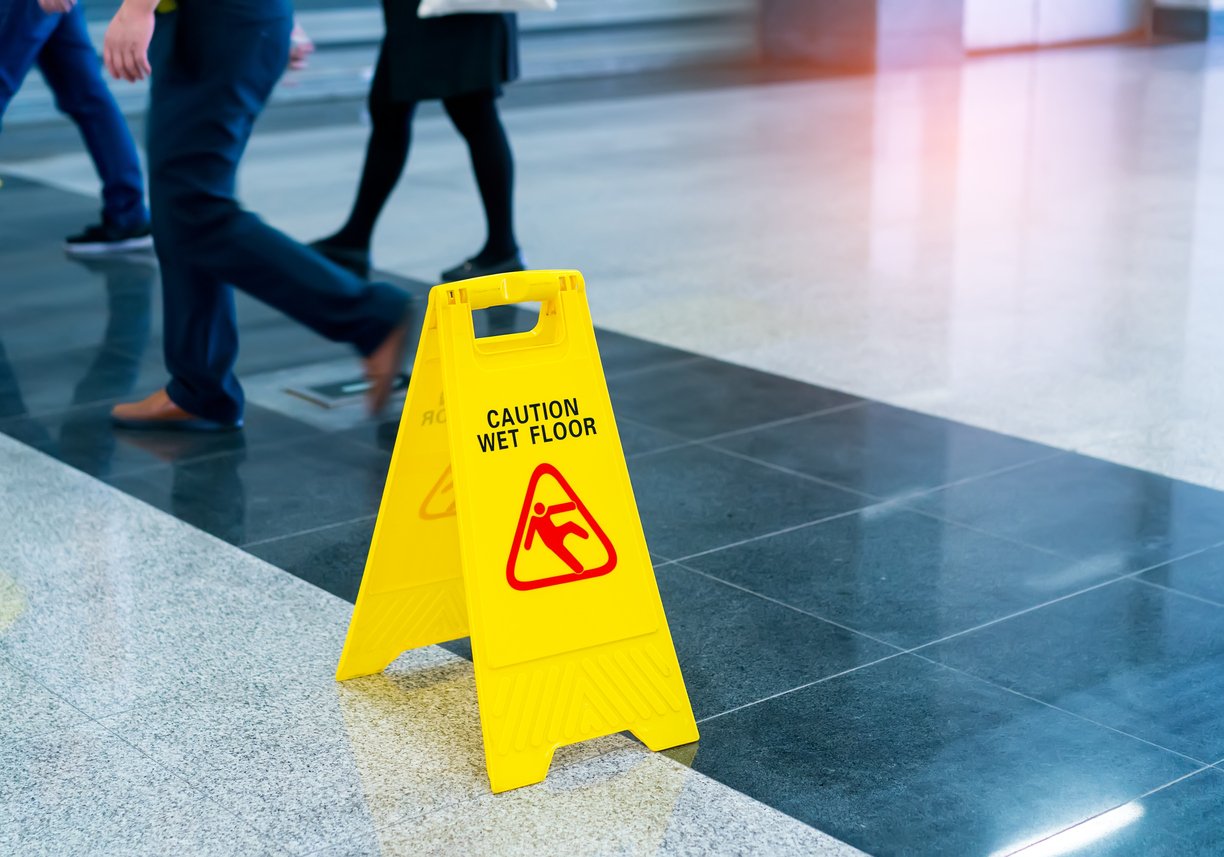4 Tips to Protect Your Floors Through Winter
Winter weather wreaks havoc on your facility’s floors, but here are 4 things you can do to protect your commercial floors against damage:
1. Arrange for low-moisture carpet cleaning
Regular vacuuming is not enough to keep your carpet clean. But hot-water extraction cleaning is expensive, it saturates your carpet, and it causes downtime for drying – also, it doesn’t protect your carpet. On the other hand, low-moisture encapsulation carpet cleaning actually cleans and protects. The cleaned fibers are left with safe and invisible anti-staining protection so that stains cannot settle into your carpet. Instead, any debris that remains on the surface is encapsulated and easily removed each time you vacuum. It’s faster and less expensive than hot-water extraction cleaning, in addition to offering longer-term protection.
2. Improve matting at entrances
An easy option is to use entrance mats that are equipped with a “water dam” border and vinyl or rubber backing. These mats contain and remove water and moisture and also prevent slipping. Some additional best practices include:
Have an entryway matting system that enables everyone entering your facility to take at least 10 steps on your mat before they reach your carpeted or hard-surface flooring.
Place entrance mats about 15 feet outside your building and 15 feet inside of it, which can help eliminate even more debris from people’s shoes.
For high-traffic spaces, consider entrance systems that have zones of scraping and drying materials, which remove up to 10 times more dirt and moisture than a carpet mat alone.
Keep scraper and wiper mats near your entryway. These mats can be placed inside a doorway and enable guests to better remove winter debris from their shoes.
Eliminate walk-off mat gaps. If you have multiple walk-off mats inside your building, keep them close to one another. Otherwise, gaps between the mats allow water to pool and damage the floor underneath. Also eliminate any gaps between doorways and the first section of a mat. Pull walk-off matting against the entrance to prevent water from pooling. If you have a covered outdoor area, you can add a walk-off mat there, too. This ensures snow and debris will begin coming off visitors’ shoes before they enter your building.
The more matting, the better protection. Data show that 20 feet of walk-off matting removes about 80% of debris, and 40 feet of walk-off matting removes practically all debris from people’s shoes. Entrance systems protect against liability, reduce maintenance costs and promote healthy indoor air quality.
3. Apply floor neutralizer
Don’t use regular floor cleaners to remove ice melt residue during winter. These cleaners can damage commercial flooring in winter because the pH balance of road salt tends to be higher than that of dirt. Plus, when used in winter, traditional floor cleaners can leave a white residue on commercial floors.
The solution is to use a floor neutralizer rather than regular floor cleaners during the winter. A floor neutralizer removes ice-melt chlorides, soap, and hard-water films. It also cleans your commercial flooring, eliminating white residue as well as the damp, salty, calcium chloride smell, leaving only a pleasant scent behind. Here are some tips for application:
Apply a floor neutralizer with a mop and bucket. Or you can use an automatic floor scrubber. Regardless of whether you use a mop and bucket or an automatic floor scrubber, you should use a floor neutralizer up to every two hours during winter, depending on foot traffic.
If you use a mop and bucket, remove the dirty cleaning solution and clean the bucket after each use. This ensures you won’t inadvertently re-deposit salt and ice melt residue back on your commercial flooring.
However, if you use an automatic floor scrubber, clean the equipment’s squeegees and tanks before you store the machine. This allows you to remove leftover salt residue that can be corrosive to the machine’s metal parts.
4. Develop a commercial floor-care program
Be proactive in your efforts to keep your commercial flooring clean. If you develop and execute a winter commercial floor-care program, you’ll be well-equipped to identify floor issues in their early stages.
Analyze commercial floor traffic patterns and usage. This information will help you determine the proper level of care and maintenance for commercial flooring across your business.
By continuously evaluating your floor-care plan, in winter or at any time, you will find ways to minimize risk for everyone entering your building and keep your flooring in top shape through any season.
GP Flooring Solutions sells, installs, and maintains any kind of flooring for commercial customers. Our commercial flooring experts use a proven process to deliver exceptional customer service and the highest-quality workmanship, and we can help you identify the best ways to protect and restore your carpet, vinyl, rubber, or ceramic tile against winter weather damage and prolong the life of your flooring products.
We are happy to provide details about winter commercial flooring care and maintenance products and solutions. To learn more or to set up an appointment with our sales team, please contact us today.


